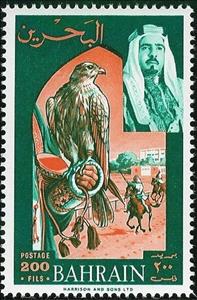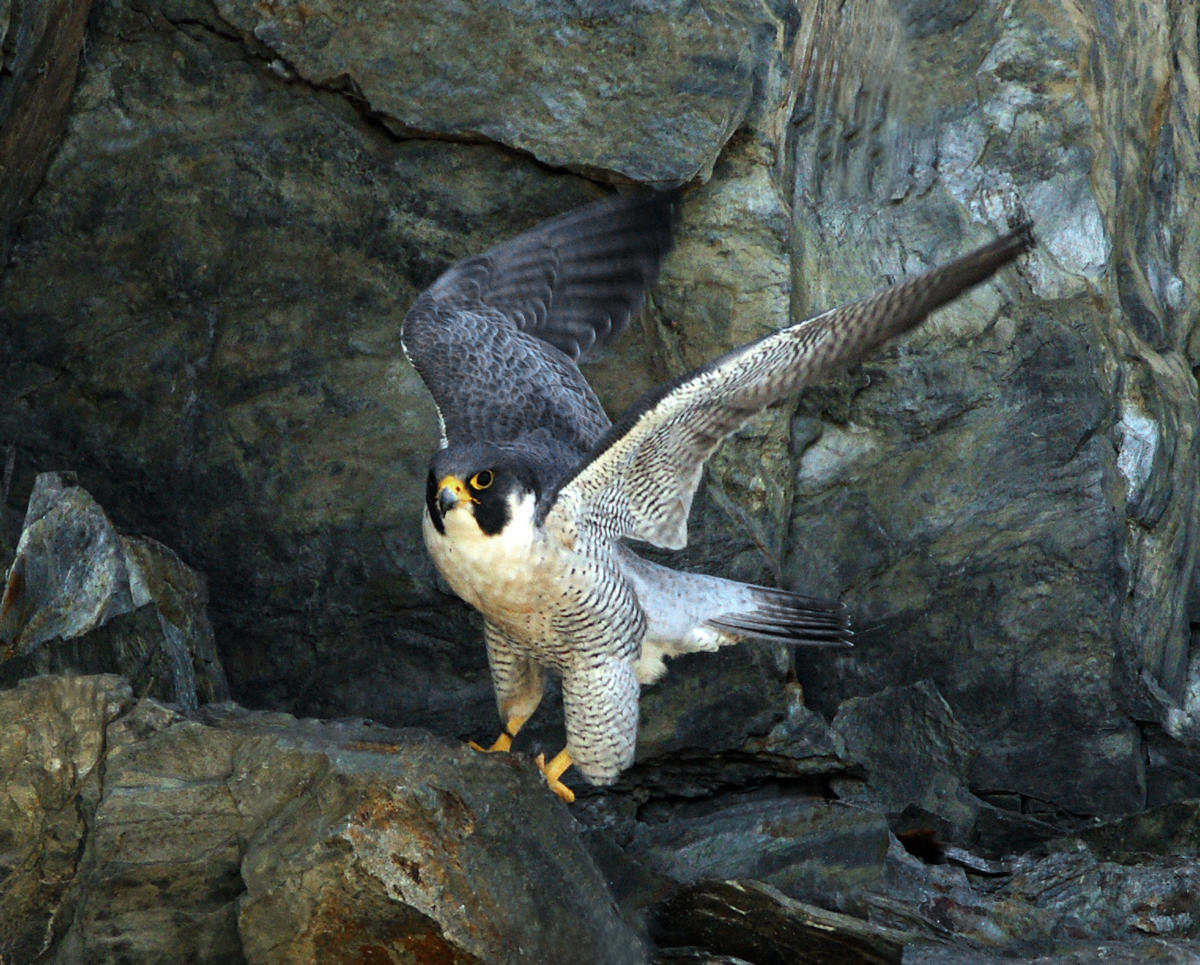Stamp: Rider and Gyrfalcon (Falco rusticolus) (Bahrain 1966)
Rider and Gyrfalcon (Falco rusticolus) (Bahrain 1966)
21 January (Bahrain ) within release Local motifs goes into circulation Stamp Rider and Gyrfalcon (Falco rusticolus) face value 200 Bahraini fils
| Stamp Rider and Gyrfalcon (Falco rusticolus) in catalogues | |
|---|---|
| Michel: | Mi:BH 158 |
| Stamp Number: | Sn:BH 150 |
Stamp is square format.
Also in the issue Local motifs:
- Stamp - Airport face value 30;
- Stamp - Airport face value 40;
- Stamp - Emir Sheikh Salman bin Hamed Al-Khalifa face value 5;
- Stamp - Emir Sheikh Salman bin Hamed Al-Khalifa face value 10;
- Stamp - Emir Sheikh Salman bin Hamed Al-Khalifa face value 15;
- Stamp - Emir Sheikh Salman bin Hamed Al-Khalifa face value 20;
- Stamp - Harbor scene of Mina Salman face value 50;
- Stamp - Harbor scene of Mina Salman face value 75;
- Stamp - Pearl-fisher face value 100;
- Stamp - Rider and Gyrfalcon (Falco rusticolus) face value 200;
- Stamp - Arabic coffee pot and coffee cup, palace of the ruler face value 500;
- Stamp - Representations from traffic, industry and the history face value 1;
Stamp Rider and Gyrfalcon (Falco rusticolus) it reflects the thematic directions:
Birds (Aves), a subgroup of Reptiles, are the last living examples of Dinosaurs. They are a group of endothermic vertebrates, characterised by feathers, toothless beaked jaws, the laying of hard-shelled eggs, a high metabolic rate, a four-chambered heart, and a strong yet lightweight skeleton. Birds live worldwide and range in size from the 5 cm (2 in) bee hummingbird to the 2.75 m (9 ft) ostrich. They rank as the class of tetrapods with the most living species, at approximately ten thousand, with more than half of these being passerines, sometimes known as perching birds. Birds are the closest living relatives of crocodilians.
Birds of prey or predatory birds, also known as raptors, are hypercarnivorous bird species that actively hunt and feed on other vertebrates (mainly mammals, reptiles and smaller birds). In addition to speed and strength, these predators have keen eyesight for detecting prey from a distance or during flight, strong feet with sharp talons for grasping or killing prey, and powerful, curved beaks for tearing off flesh. Although predatory birds primarily hunt live prey, many species (such as fish eagles, vultures and condors) also scavenge and eat carrion
King is the title given to a male monarch in a variety of contexts. The female equivalent is queen regnant (while the title of queen on its own usually refers to the consort of a king). In the context of prehistory, antiquity and contemporary indigenous peoples, the title may refer to tribal kingship. Germanic kingship is cognate with Indo-European traditions of tribal rulership (c.f. Indic rājan, Gothic reiks, and Old Irish rí, etc.) In the context of classical antiquity, king may translate Latin rex or either Greek archon or basileus. In classical European feudalism, the title of king as the ruler of a kingdom is understood as the highest rank in the feudal order, potentially subject, at least nominally, only to an emperor (harking back to the client kings of the Roman Empire). In a modern context, the title may refer to the ruler of one of a number of modern monarchies (either absolute or constitutional). The title of king is used alongside other titles for monarchs, in the West prince, emperor, archduke, duke or grand duke, in the Middle East sultan or emir; etc. Kings, like other royalty, tend to wear purple because purple was an expensive color to wear in the past.
Animals are multicellular, eukaryotic organisms of the kingdom Animalia (also called Metazoa). All animals are motile, meaning they can move spontaneously and independently, at some point in their lives. Their body plan eventually becomes fixed as they develop, although some undergo a process of metamorphosis later on in their lives. All animals are heterotrophs: they must ingest other organisms or their products for sustenance.
Adult falcons have thin, tapered wings, which enable them to fly at high speed and change direction rapidly. Fledgling falcons, in their first year of flying, have longer flight feathers, which make their configuration more like that of a general-purpose bird such as a broad wing. This makes flying easier while learning the exceptional skills required to be effective hunters as adults.





